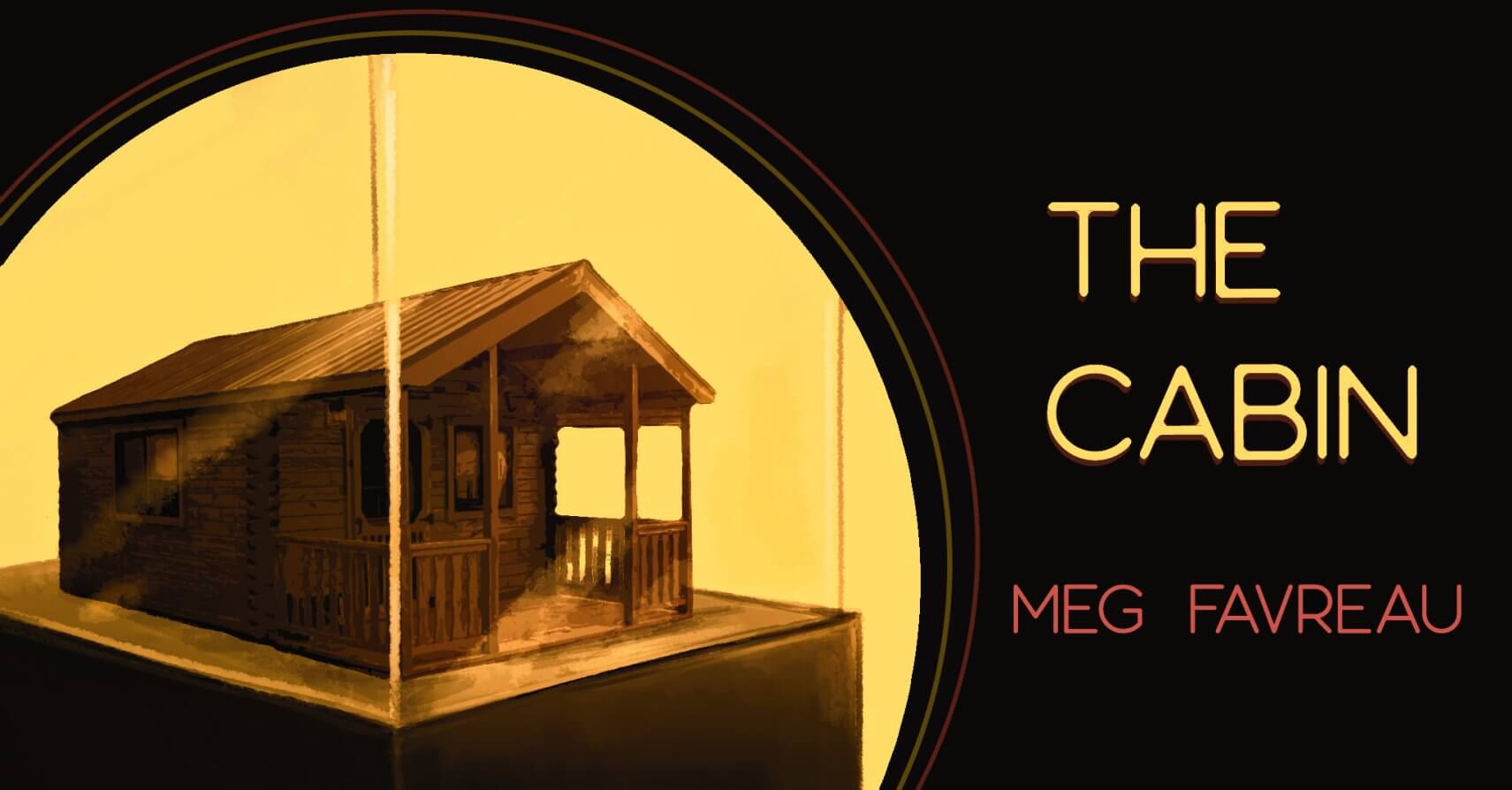Looking for a place that was just theirs for the night, they found someone else’s.
They had taken to doing this thing on the weekends where they’d just pack up and head into the woods with a compass and map. They’d find a clearing with space for the tent, make some macaroni and cheese, and try to make a baby. The only part that had worked so far was the macaroni and cheese.
But today there was a cabin. A small, rough thing. Caked in leaves.
Inside, they found old cans and an old bed and an old table. Inside, they found a calendar stuck on July 1992. Inside, they found tools and a small mirror and a wood stove.
And then there were the paintings, blobby things. Rough, occasionally lovely. The woods. Animals. A man’s face.
And there were the journals. Years of them. Joe opened one to find scratchy handwriting in ballpoint pen. They were just an accounting of the day, every day, but there was a poetry to them. BBQ beans, tried fishing, the hawk is back. Thought about crying but didn’t.
Outside, Sarah saw the fabric among some fallen leaves. It turned out to be wrapped around the bones. A bear had gotten him, they guessed, followed by the vultures, the crows, the flies, the maggots. The sun, water, summer, winter, time. Now: bones.
Sarah and Joe reported it all to the police. The police brought someone from Keene State College, who then brought a whole team. Sarah and Joe showed them, told them. The people from the college packed up the journals and the paintings and brought them to the college museum, where they were placed on pedestals. The paintings were described as “primitive.” The journals were described as “stark.” The Union Leader called the show “a masterpiece.”
NPR came sniffing around the cabin, then others. Journalists, critics, someone who wanted to make a movie but didn’t. Sarah and Joe worked with a university press to put out a book, a big coffee table thing that combined the art and the writing. It sold well, for what it was. People wanted to believe it was still possible to discover something like this. People wanted to believe there were surprises in this world.
The exhibit toured to support the book. Sarah and Joe toured, too. They told their story again and again. The archivists and archaeologists went back, took more. They reverently displayed the bones and fabric with prop leaves, just as Sarah found them. The bones and fabric were photographed daily, again and again and again. They were on Facebook and Instagram and TikTok. A group of girls, gloss on their lips, next to the bones with a caption “Whoa” and that pink double heart emoji.
Sarah and Joe tried to find family, find anyone. A small black-and-white photo in the cabin implied a sibling, a sister, once upon a time. A couple of people claimed they were related, sniffing the money, but nothing ever panned out. Sarah and Joe took the money themselves, slept poorly, gave it away to the college to make a scholarship.
A team moved the entire cabin to a museum in New York City for a show, taking it piece by piece from the White Mountains and recapitulating it in the middle of Manhattan. At a big donor event, Sarah puked and realized that after all this time, there it was inside her: a baby. Or some gathering of cells that would become a baby. As Joe did the presentation alone, Sarah slipped into the exhibit hall in her itchy gown and took the bones and fabric, packing them in a cardboard box. They left immediately after the speech, renting a car to drive out of the city, even though they had tickets to fly the next day.
They returned to the site of the cabin, now just a blank foundation. Kids had been there. There were empty Natty Light cans, an old seat from a minivan, a microwave pocked with BB holes. Joe dug a space for the bones and fabric and Sarah placed them inside. Sarah apologized and Joe apologized and they walked away, hoping that stealing this life wasn’t a cosmic bargain, wasn’t a bad start, that we all get to be blank slates when we come into this world and someone wraps us in bits of fabric.

